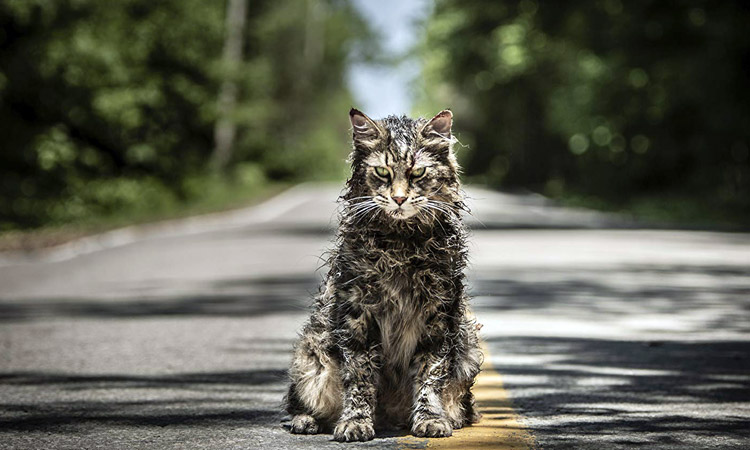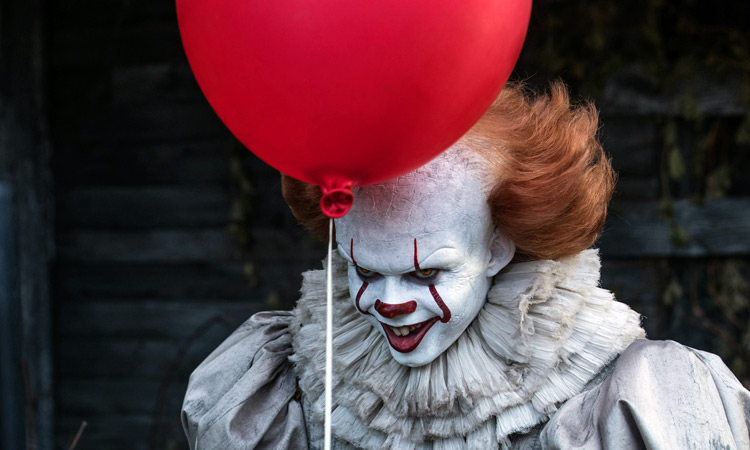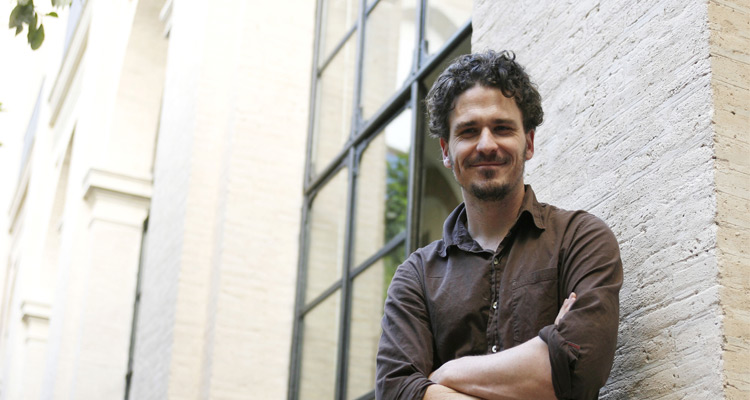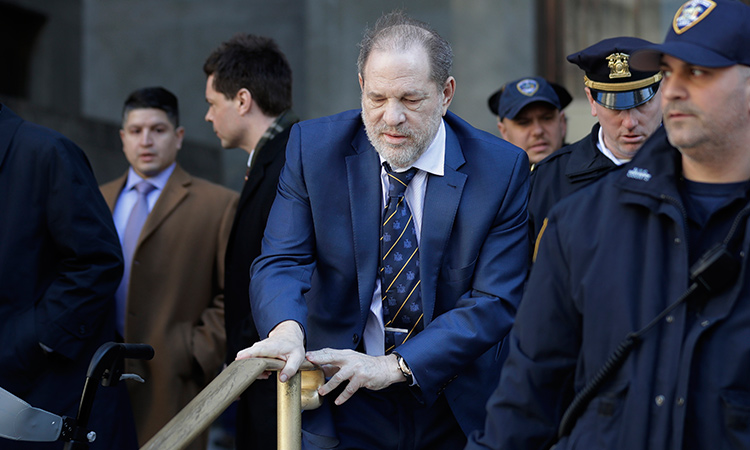From ‘Pet Sematary’ to ‘It’: Why is Stephen King’s work so scary?

A new take on Stephen King’s 1983 novel ‘Pet Sematary’ hit cinemas this month. TNS
Clarisse Loughrey
The world lives in terror of Stephen King. Over nearly five decades and 58 novels, he’s infested our dreams with the most ghoulish of creations: a sewer-dwelling, child-eating clown; a building so corrupt in its foundations that it turns men mad; a child resurrected from the dead without its soul or conscience. No other living author can scare us so efficiently. His work digs straight into our most primal fears.
His unembellished prose has made him an easy target for critics. Literary circles love to debate whether King is actually a good writer or merely a trickster, having fooled the masses into treating pulp fiction like high art. After the publication of 'The Shining' in 1977, 'The New York Times' dismissed King as “a writer of fairly engaging and preposterous claptrap.”
In 2003, critic Harold Bloom reacted with utter disbelief to the news that King had received an award from the National Book Foundation for his “distinguished” contributions, declaring it “another low in the shocking process of dumbing down our cultural life.”
It’s inevitable a little snobbery will arise out of such immense popularity. King is one of the bestselling authors of the past half century, having shifted more than 350 million copies in his lifetime.
He’s come a long way, considering the fact he tossed his first novel into the bin only for it to be rescued by his wife. She convinced him not to abandon it and, in 1974, it was published under the title Carrie. It became the hit horror film starring Sissy Spacek in 1976, and was remade in 2002 and 2013.
King continues to be a major source of inspiration for Hollywood, having inspired nearly 100 film and TV adaptations. The latest, a new take on his 1983 novel ‘Pet Sematary’ (made into a film before, in 1989), hit cinemas this month.
The concluding part of 2017’s horror smash ‘It’ (previously a 1990 miniseries) opens in September, with A-listers Jessica Chastain and James McAvoy joining the cast. New TV adaptations of ‘The Stand’ (a miniseries in 1994), the ‘Dark Tower’ series (a film as recently as 2017) and ‘The Outsider’ (brand new) are all in production.
Although his genre-sprawling efforts have seen him mix sci-fi, fantasy, westerns and crime fiction into his work, he’s still primarily thought of as a master of horror. Like him or not, King has harnessed something within the public imagination and manipulated it in new, thrilling ways.
His work emerged in the shadow of an America that had finally been forced to face some of its own ugliness, as exposed by the civil rights movement, the Vietnam War and, later, the Watergate scandal. The rise in serial killers made every neighbour a potential menace. The Cold War threatened total annihilation at the press of a button. These were hard truths for people to swallow.
The concluding part of 2017’s horror smash ‘It’ opens in September. Twitter
One major influence on his work is HP Lovecraft, whose monsters reflected his own anxieties over the vast scientific and technological advancements of the early 20th century. To him, there was no telling what could be uncovered in the process.
In 1926’s‘The Call of Cthulhu,’ he writes: “The most merciful thing in the world, I think, is the inability of the human mind to correlate all its contents … some day the piecing together of dissociated knowledge will open up such terrifying vistas of reality … that we shall either go mad from the revelation or flee from the deadly light into the peace and safety of a new dark age.” In Lovecraftian horror, facing the incomprehensible will only bring you fear and madness.
When it comes to King’s work, however, terrors don’t rise out of the incomprehensible, but out of the things America knows to be true but has, for so long, tried to deny. ‘Carrie’ is a fireball of rage directed at the continuing suppression of female sensuality; ‘The Shining’ disrupts the sanctity of parental legacy, questioning whether we can ever escape the cycles of violence and destruction we’ve inherited from our forebears; ‘Misery’ and ‘Cujo’ explore how much of our self-control is stolen away by addiction.
King also picked up some of Lovecraft’s fears about technology, expressing similar anxieties over how little we understand its implications, despite relying so much on it. There are killer cars galore in his work, from ‘Christine’ to ‘Maximum Overdrive’ (the first and only film he directed). These are all ideas that threaten the foundations of a patriarchal, industrious, family-orientated American society.
It is not the physical or mental aberration in itself which horrifies us, but rather the lack of order which these aberrations seem to imply.
In ‘Danse Macabre,’ his 1981 collection of essays on horror, King names the three emotions elicited by the genre: revulsion, horror and terror. It’s the last of these he deems the most powerful, as it deals not with what is seen or heard but what it tells us about our own world.
When writing about the appeal of monsters, he adds: “It is not the physical or mental aberration in itself which horrifies us, but rather the lack of order which these aberrations seem to imply.” America fears self-reflection because it connects it too vividly to disruption and chaos.
King deals frequently with denial, too, albeit with a supernatural twist. The dead, for example, have a tendency to rise from the grave in order to force hard truths on the story’s protagonists.
Although loved ones (feline or human) buried in ‘Pet Sematary’ are soon miraculously resurrected, they return as monsters, exacting revenge on those who refused to accept death’s finality. In the novella ‘1922,’ a farmer murders his wife in cold blood, only to have his life ruined in return, as her phantom ensures his crimes do not go unpunished.
The past is a haunting place, rendered in metaphorical terms in ‘The Shining,’ where the hotel amplifies Jack Torrance’s fears that he’ll repeat his past mistakes, after his drinking problem led him to accidentally break his son’s arm. He’s eventually sucked into the hotel’s own cycle of violence and finds himself doomed to repeat it.
We cannot deny our pasts or try to escape them. The population of Derry (the fictional town in Maine where many of King’s works are set) can try to suppress the town’s dark history — from the ironworks explosion that killed nearly 100 children, to the burning of the Black Spot by white supremacists — but this only allows the creature at the centre of ‘It,’ otherwise known as Pennywise the clown, to thrive.
Every 27 years, he resurfaces to feed off this violence. Anyone looking at American, and indeed world, history would recognise these same repeating cycles. As George Santayana famously wrote: “Those who cannot remember the past are condemned to repeat it.” Yet King doesn’t wallow in despair.
He may use our fears of facing the truth as a means to terrify us, but he doesn’t doom us for eternity. It’s a gang of children who finally subdue Pennywise. We hope, too, that future generations can finally defeat our own world’s monsters.
The Independent








